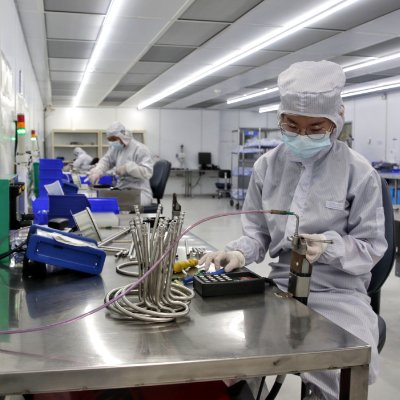The shift to remote working, the introduction of electric vehicles and a life increasingly lived online are driving the global economy's insatiable appetite for tiny computer chips upon which modern life rests.
As chip suppliers scramble to meet demand for ever smaller and ever more powerful transistors - a market expected to almost double to US$1 trillion (S$1.4 trillion) by the end of the decade - the future-facing industry must contend with a post-pandemic world of labour shortages, great-power rivalries and customers who want to produce the gadgets for themselves.
The US-China tech rivalry, in particular, can both be a boon and bane for countries in Southeast Asia with a substantial chip sector. US efforts to curtail China's semiconductor industry has meant that firms in the industry are looking to expand outside of China.
The US-China strategic rivalry that has led to mounting tension in the Taiwan Strait has also meant that companies are seeking to diversify away from Taiwan by building new plants overseas, including in Southeast Asia. One such firm is Taiwan Semiconductor Manufacturing Company (TSMC), which is building new factories in the United States and Japan but also reported to be considering building one in Singapore.
However, geopolitical tensions add to the risks and uncertainties of doing business with either of the two great-power rivals.
For Southeast Asia's chip-producing countries much is at stake.
Not only do computer chips contribute big chunks of gross domestic product (GDP) and help countries woo high-tech foreign investment and cultivate a talented work force, the industry has also helped underpin the region's reputation as a reliable manufacturing hub.








